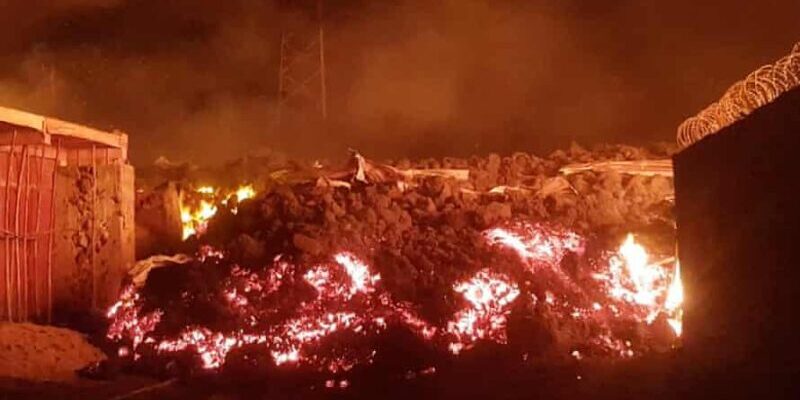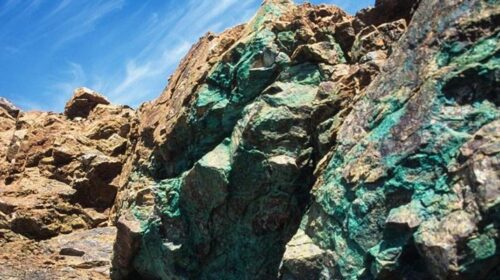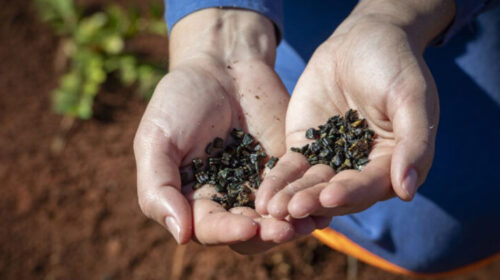DRC’s Goma-Nyiragongo Volcanic Eruption: at least five people died during the evacuation of the city
The governor of North Kivu, Lieutenant-General Constant Ndima communicated this Sunday the provisional assessment of the volcanic eruption the day before. At least five were killed in a traffic accident on Sake Road as people evacuated the city under threat.
The military governor who intervened this morning on the RTNC also reported cases of theft and looting of shops. An escape attempt was also reported at the central prison in Munzenze. This is the basis of the several shots heard at night in Goma.
Several homes were razed to the ground by volcanic lava north of Goma, precisely in the town of Buhene, bordering between Goma and the territory of Nyiragongo, said the governor.
“An enlarged meeting at Monusco and other partners is scheduled for a little while at 11:00 a.m. We are going to assess the whole situation and each part of which the town hall of the city will have to play its role”, said Lieutenant-General Constant. Ndima.
More than 5,000 people who fled the day before were already returning to Goma this Sunday morning from Gisenyi, Rwanda. The same movement is observed on the Sake-Goma section.
Government spokesman Patrick Muyaya announces government measures to provide a humanitarian response to the victims of the disaster.
Moïse Katumbi also expressed, his solidarity with the population of Goma and its surrounding victims of the volcanic eruption.
“My brothers from Goma, we are with you with what happened, the eruption of the volcano. I know that it is a suffering that affects you and affects all Congolese, the whole world. We ask God to assist us”, said Moïse Katumbi this Sunday, in a video message addressing the population of Goma and surrounding areas, before promising his arrival in Goma in order to “share this pain with you”.
He called on the government to take appropriate measures to ensure consistent support for the victims. “I call on the government to do everything possible to help the suffering population,” he continued.
Meanwhile, the military governor of North Kivu, Lieutenant-General Constant Ndima confirmed the destruction of several houses by lava in the village of Buhene bordering between Goma and the territory of Nyiragongo.
A crisis meeting was called this Sunday. The military governor and deputy humanitarian coordinator Diego Zorilla took part. The meeting aimed to take appropriate measures to prevent the worst as the volcano remains active. Intense seismic movements have been felt since the morning in the city.
In Kinshasa, government spokesperson Patrick Muyaya indicates that arrangements are underway to provide a humanitarian response to all the victims.
In the meantime, more than 5,000 people who fled the day before are already returning back to Goma from Gisenyi, Rwanda. The same movement is observed on the Sake-Goma section. But as a precaution, many residents of neighborhoods in the north of the city prefer to stay with host families, especially in Katindo, Ndosho, Kyeshero, neighborhoods located to the west of Goma.
It’s also been reported that the tourists who were present on Saturday at the summit of Nyiragongo are safe and sound, reassures the Congolese Institute for the Conservation of Nature ( ICCN ), the authority responsible for the conservation of protected areas. The same source confirmed that mountain gorillas are not threatened either.
“They weren’t many. Less than 10 people, guides included. No deaths are provisionally reported at this time. There is material damage north east of Goma. The lava flows stopped 1 kilometer from the airport, ” Cosma Wilungula, ICCN Director General , told DeskNature.com.

At the ICC we are also pleased with the management of the situation by the Volcanological Observatory of Goma.
“The population that fled to Rwanda (Rubavu) is gradually returning. Those who have gone to Sake are still waiting. But they will soon return to Goma, ” added the same source.
“The volcano has always been active and that yesterday there was only a surge in activity. If we follow the rules well, we get away with it. We take all the necessary precautions to avoid major risks, ” adds Cosma Wilungula.
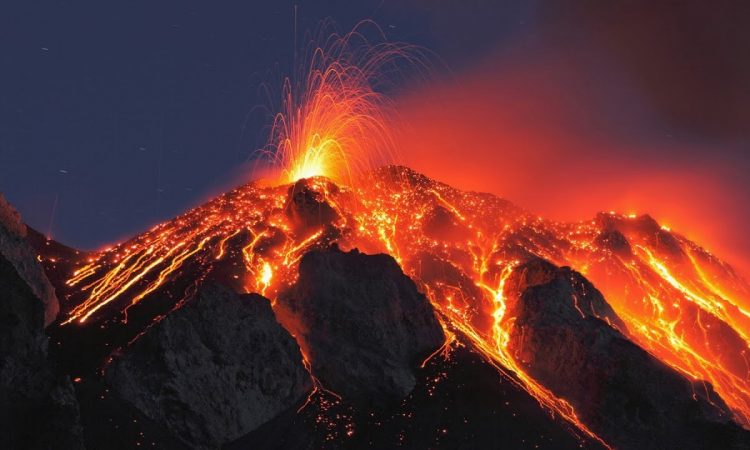
The Nyiragongo is located about twenty kilometers north of the city of Goma. It rises to 3,470 meters above sea level and has a summit formed by a crater 1.2 kilometers in diameter. It is also characterized by the presence of an almost permanent lava lake. Its long lava flows are considered the fastest in the world.
The ascent of this volcano is popular with tourists who come to the region. These six hours of walking (nearly 1,500 meters of vertical drop) make Nyiragongo an exceptional experience, according to tourists.
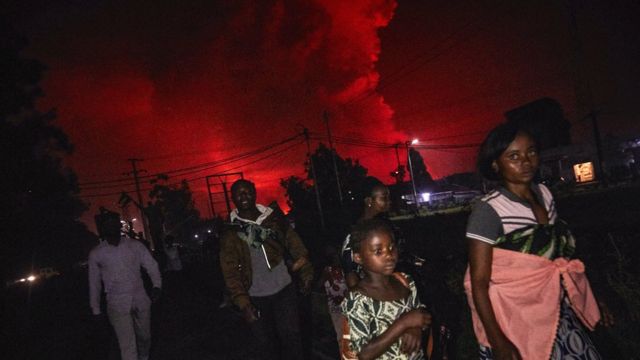
Meanwhile, Rwandan authorities also noted that around 7,000 Congolese crossed the border on Saturday. According to UN sources, at least 25,000 people have been displaced in Sake, 25 km northwest of Goma. However, most people are slowly making their way home since the lava stopped flowing this morning.
In a statement on Sunday, UNICEF is concerned to see hundreds of people returning to Goma to find damaged houses causing shortages of water and electricity.
“We do not yet know how many homes were affected by the eruption in the territory of Nyiragongo, north of Goma”, says the UN agency which has deployed a team in the affected areas of Sake, Buhene, Kibati and Kibumba to provide a first line response.
It is about the installation of chlorinated water points in and around Sake to limit the spread of cholera, to strengthen epidemiological surveillance of cholera, especially in Goma following the return of thousands of residents. Several other challenges are reported and UNICEF teams are setting up two transit centers for unaccompanied and separated children, in collaboration with the local Congolese authorities. The UN agency is also working with its partners to refer cases of violence and sexual abuse so that they receive adequate medical and psychosocial support.
The last eruption of Nyiragongo, in 2002, left more than 100,000 people homeless. It is considered one of the most active and dangerous volcanoes in the world.
![]()


